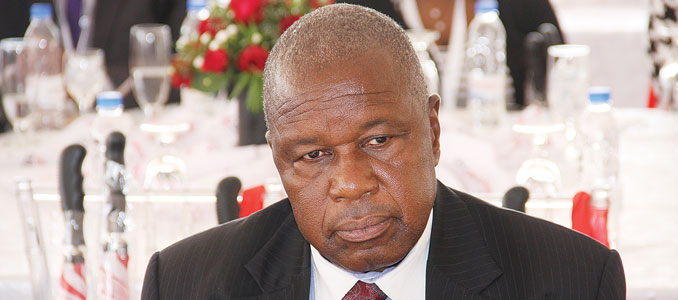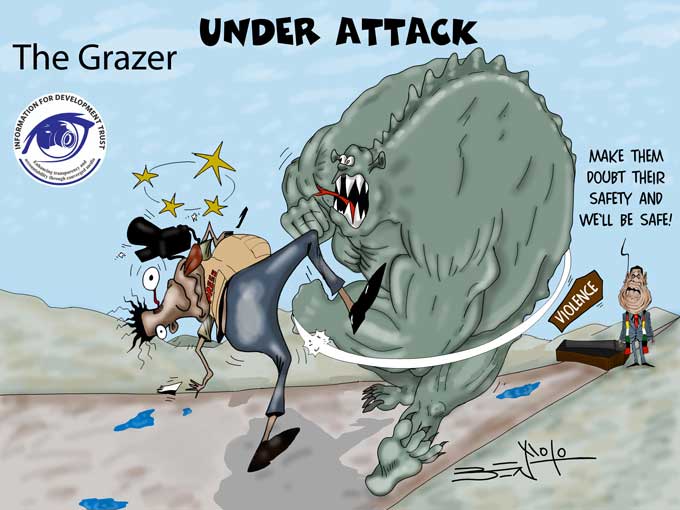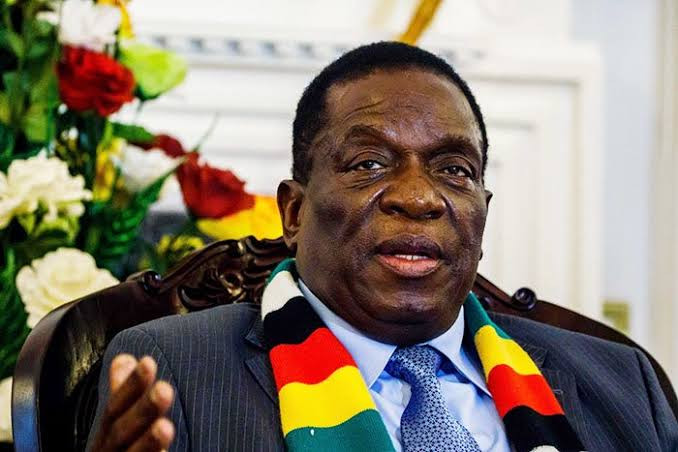
BY FAY CHUNG
This is a good question.
Possible answers: Yes or No. Or partially, within FIVE years. Or It will take longer, maybe 10 years. What do you think?
Are there ways we can improve the situation?
The government is the most powerful organisation in the country, and its most powerful instrument or weapon is the budget.
The government can grow the wealth of the country, or it can just use it, well or badly. We should be able to judge what it is doing.
One serious problem Zimbabwe faces is that the six million workers in the country of 14.5 million.
More than five million people are not fully employed and do not earn a good salary: most of them are employed in the informal economy, ie half of them work with their own family on their little plots of land such as in the communal areas or small scale resettlement areas, and half work at low wages or no wages for small scale businesses.
- Chamisa under fire over US$120K donation
- Mavhunga puts DeMbare into Chibuku quarterfinals
- Pension funds bet on Cabora Bassa oilfields
- Councils defy govt fire tender directive
Keep Reading
In addition we now have five million Zimbabweans in the diaspora, who left to find jobs elsewhere.
That is a lot of unemployment and under-employment.
The money that is in the budget comes from the people, from the taxes we pay from the goods we buy and from the work we do.
A very little comes from donors. If the money is badly spent, or if some of it is stolen, this means the whole nation suffers.
It is therefore essential that we all understand how our budget is spent.
The role of government in the economy
Before independence the Rhodesian government ran a very strong government, and after the 2nd World War in 1945 they began to make a profit.
Their profit was mainly from agriculture, manufacturing and minerals.
These are still the three most important areas of the economy.
For the first 20 years of independence the government carried on running the economy we had inherited, which president Julius Nyerere called the “treasure of Africa” that we should not destroy.
The main problem with the Rhodesian government was that they only looked after the white population, less than 4% of the population, giving them the best of everything, whilst giving as little as possible to the black population.
African land, its best land, was taken away to be given to Whites, some of it free of charge, with cattle taken at give away prices.
This continued for a hundred years.
After a fierce liberation struggle where some 60 000 people died, Rhodesians gave up power through the Lancaster House constitution, which however protected the property rights of whites, particularly over agricultural land.
Million of poor African farmers wanted their land back.
Under Lancaster it was agreed that the newly independent government would be given money to buy white owned commercial farms by the United States and British governments.
In 1980 Britain gave US$260 million and three million hectares of the 18 million held by whites was bought, and resettled for about 75 000 farmers in the 1980s and 1990s.
This was the only money Zimbabwe ever received for resettlement.
The United States never kept to their promise, which was not written in a contract, but their Senate refused to recognize the verbal agreement.
American leader Kissinger, who made the promises in the early 1970s had been out of power by 1980s and could not influence their Senate, which did not see why they should pay for land they had not taken or owned.
Without money to buy the land from the white farmers, then president Mugabe decided to establish the fast track land resettlement programme (FTLRP), in 2001.
The British government and most white farmers opposed the FTLRP, and refused to give up more than one million hectares of land and they wanted to remain in charge of resettling it.
In addition in 1998 the government joined fighting in the Democratic Republic of the Congo, DRC, war, against tribal rivals who were supported by Uganda and Rwanda, countries which had members of some of the same tribes as the DRC.
Zimbabwe managed to get some support from Sadc, and an African war was started financed by Western countries on each side. It was indeed a colonial war fought on behalf of European countries for the DRC’s lucrative mines which then president Laurent Kabila had taken from the French and Belgians and given to the British, American, Canadian and South African companies.
These companies were supported by their governments.
The Zimbabwean Armed Forces won decisively: a critical role was played by the Airforce.
But Zimbabwe made enemies from the sides, which lost their mines.
Zimbabwean generals were richly rewarded with temporary ownership of the mines.
The war was fought with Zimbabwean government money.
The FTLRP was very popular with landless Africans, but bitterly opposed by the USA which imposed drastic sanctions known as the Zimbabwe Democracy and Economic Recovery Act, (Zidera), in 2001, renewed in 2019, 2020 and 2021.
Zidera banned donations and loans through the IMF and the World Bank which they control.
Zidera was supported by most but not all Western countries.
This is the story of the times, but still affects us twenty years later.
Now today’s budget
How can today’s budget bring about the needed economic growth?
Zidera was imposed at the same time as the Economic Structural Adjustment Programme (Esap).
Both were dangerous for Zimbabwe.
Esap was imposed all over the world, but especially in African countries.
African countries were offered generous donations and loans to accept Esap: in the beginning nearly all African governments had adopted some forms of socialism and single party politics, including Zimbabwe.
Esap required governments to weaken themselves, and give power instead to private enterprise.
Zimbabwe did indeed receive an increase of donor funds from US$250 million to US$400 million but for only two years, 1991 and 1992.
One problem in 1991 was that the Zimbabwe government the private sector was almost wholly controlled by Whites who were not keen on expanding to include Black capitalists in competition with themselves.
Nor were they able to take over the functions which governments had traditionally performed.
Instead formal sector employment shrank, and the informal sector increased to take its place.
Government reacted by printing money, so that very soon Zimbabwe had trillions of Zimbabwe dollars, but production in farming and manufacturing both shrank, some sectors by over 10% compared to previous records.
For example Zimbabwe was self-sufficient in maize production up until 1996. From then onwards Zimbabwe had to import most of its food.
The reason was that in 1996 the government stopped all loans and marketing for small scale farmers who were the main growers of maize for food as compared to maize for cattle feed by commercial farmers.
The Grain Marketing Board, (GMB), stopped funding peasant farmers and also stopped marketing their goods. It was privatised.
Initially it provided services to farmers who could provide 5 000 tonnes at a time. This excluded small scale farmers completely.
One lesson government needs to learn is that it should accept the good policies of both the socialism of the 1980s and 1990s, and some of the good policies of Esap.
Instead it has continued doing Esap policies blindly although it changed its name.
What are the good policies of these two opposite ideologies: Zimbabwe changed from socialism to Esap overnight?
Without sufficient planning and preparation by a weakened Zimbabwean government tens of thousands more became unemployed, at a time of rising food prices.
Bread riots and the speedy formation of a strong opposition party, the Movement for Democratic Change (MDC) followed.
Luckily for the ruling party, MDC made an immediate alliance with the white farmers who wanted their farms back: this was naturally unpopular with masses desperate for land.
White farmers gave generous financing and management to the MDC.
So did some Western countries.
What were the good things of the two opposing ideologies?
Firstly socialism provided free primary and basic health facilities.
It provided affordable secondary and other medical facilities.
It provided a clean water supply in both rural and urban areas.
These three basic human rights must be preserved.
In the 1980s it was possible to make them affordable, but just as ESAP became more powerful, government costs began to rise. African salaries rose to those of white levels.
The population doubled from 7½ to 14.5 million today, not counting the five million said to be in the diaspora.
The number of staff, students and patients increased.
The economy became stagnant.The per capita GDP did not increase over forty decades.
What to do?
What is to be done is clear:
It should devote more money for capital expenditure (infrastructure, buildings, equipment, maintenance) and less on recurrent (mainly salaries). We are not given details so far, but from an analysis of the primary and secondary education budget of $124.1 billion, 5% is for capital and 95% is for recurrent. We know there are a lot of schools: in 2020 there were 9778 schools, 6 798 primary and 2 980 secondary. 80% of them are “private” schools, ie mission, provincial, district council, municipal and community owned schools. Most schools are broken down. There are more than eight million school children. The amount provided for capital for all these schools is $625 billion, 5% of the total. Of course, we cannot tell how much the Zimbabwe dollars will be worth in United States by the time of expenditure, but it would certainly be important to increase the capital expenditure to about 20% of total costs if possible. It would be better if government were to decentralise its capital expenditure to the 80% of schools rather than trying to confine the money to itself. More money to the 80% of private schools will be advantageous to both government and Zimbabwe, as communities are able to attract diaspora, donor, church and community funding as they did earlier, augmenting government expenditure.
Then what will be the exchange rate in 2022? It is absolutely essential to keep the inflation rate to 5-10% if the economy is to grow well. This is particularly true for the cost of basic food such as maize. Also the cost of water, electricity and rates should be stable. This means government must control its expansion of the money supply and of government expenditure more strictly.
More money should be granted to local authorities for additional salaries and other costs, rather than government taking all costs of large employers such as education and health. The teacher pupil ratio for primary is one teacher to 40 pupils, and this is the maximum we should allow. For secondary it is 1:30 up to O’Levels: this could well be adjusted (1:32? 1:35?) Local authorities are allowed to employ additional staff, mainly retired staff and young graduates. They can increase the number of employed.
- Fay Chung was a secondary school teacher in the townships; lecturer in polytechnics and universities; teacher trainer in the liberation struggle; civil servant and UN civil servant and ministry of primary and secondary education.
- These weekly articles are coordinated by Lovemore Kadenge, independent, past president of the Zimbabwe Economics Society (ZES) and past president of the Chartered Governance and Accountancy Institute in Zimbabwe (CGI Zimbabwe). Email: kadenge.zes@gmail.com and Mobile No. +263 772 382 852










